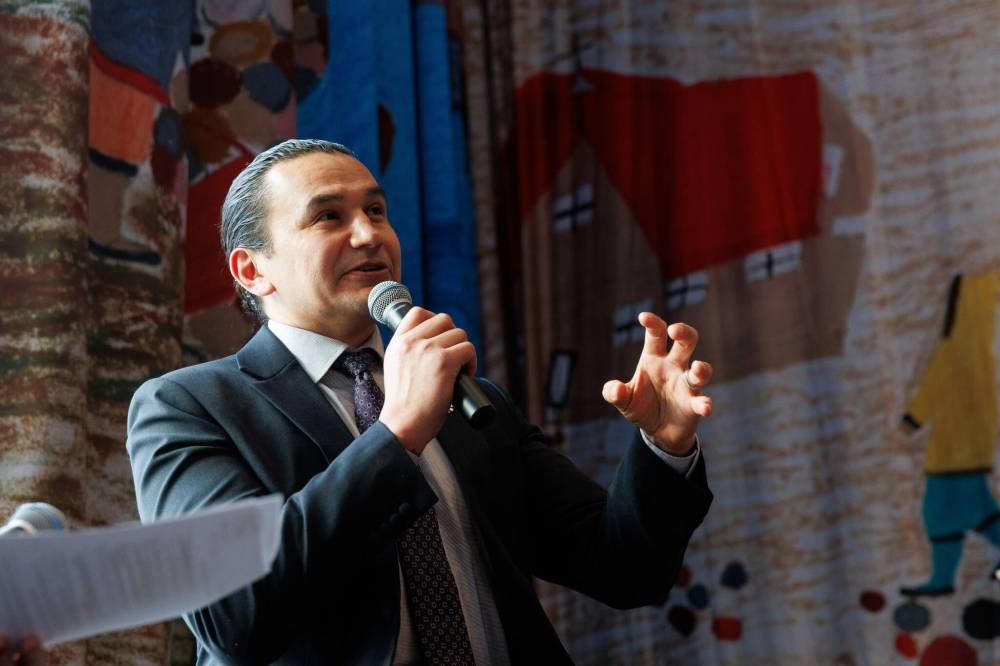Time to get downtown bustling again
Advertisement
Read this article for free:
or
Already have an account? Log in here »
To continue reading, please subscribe:
Monthly Digital Subscription
$1 per week for 24 weeks*
- Enjoy unlimited reading on winnipegfreepress.com
- Read the E-Edition, our digital replica newspaper
- Access News Break, our award-winning app
- Play interactive puzzles
*Billed as $4.00 plus GST every four weeks. After 24 weeks, price increases to the regular rate of $19.00 plus GST every four weeks. Offer available to new and qualified returning subscribers only. Cancel any time.
Monthly Digital Subscription
$4.75/week*
- Enjoy unlimited reading on winnipegfreepress.com
- Read the E-Edition, our digital replica newspaper
- Access News Break, our award-winning app
- Play interactive puzzles
*Billed as $19 plus GST every four weeks. Cancel any time.
To continue reading, please subscribe:
Add Free Press access to your Brandon Sun subscription for only an additional
$1 for the first 4 weeks*
*Your next subscription payment will increase by $1.00 and you will be charged $16.99 plus GST for four weeks. After four weeks, your payment will increase to $23.99 plus GST every four weeks.
Read unlimited articles for free today:
or
Already have an account? Log in here »
Hey there, time traveller!
This article was published 26/01/2024 (629 days ago), so information in it may no longer be current.
It’s often said one of the primary indicators of a city’s overall health is the strength and vibrancy of its downtown.
And these days, in most urban settings, downtowns are feeling decidedly down and out.
Winnipeg is one of many cities still suffering from a post-COVID malaise whose symptoms could best be overcome by a well-timed injection — of people — into the offices, storefronts, restaurants and social spaces left mostly vacant by extended lockdowns and other pandemic-induced changes to the way people work and generally interact.

MIKE DEAL / WINNIPEG FREE PRESs fileS
Premier Wab Kinew takes part in the Downtown Winnipeg BIZ speaker series on Jan. 19.
It was no doubt encouraging to proponents of downtown development and revitalization when Premier Wab Kinew last week threw his support behind efforts to get more people back to their traditional workplaces, rather than remaining in the remote-working routines made necessary by pandemic requirements for limited interpersonal contact.
“The idea that hybrid work should be the default is something that we need to revisit,” the premier told a forum conducted by the Downtown Winnipeg BIZ, adding he envisions public-sector workers as a key component of bringing people — and the economic activity they generate — back to the city’s core.
While not making any definitive pronouncements at the BIZ gathering, Kinew indicated his government is assessing ways in which public-sector employers with offices downtown — including Manitoba Hydro, Manitoba Public Insurance, the Workers Compensation Board, Shared Health and the provincial government itself — could set an example by taking steps to repopulate their workplaces on a more frequent and consistent basis.
It’s an admirable position; as the premier said, there are numerous arguments for — and benefits of — bringing workers back downtown. But it’s also one that is bound to be met with resistance from those for whom working remotely has become a comfortable and convenient state of being.
Among the obvious advantages of working in a traditional office setting are the increased efficiency afforded by face-to-face communication, and the enhanced job satisfaction derived from being physically part of a team — an attribute that cannot similarly be created by connecting electronically with an array of thumbnail-sized video images arranged Brady-Bunch-style on a computer monitor.
According to the business-bible periodical Forbes, employees in shared workspaces develop a greater sense of belonging, connection, acceptance and community; and when individuals feel better about their workday experience, teams perform at a higher level.
Those benefits might be a tough sell, however, for those whose remote-work arrangements have eliminated the headaches of travelling to and from the office, eliminated parking costs and reduced stresses associated with school schedules and child-care obligations.
That same Forbes article cites a 2021 McKinsey study showing 29 per cent of people would likely switch jobs if their employers required them to work exclusively onsite. For many companies, flexible work arrangements have become a crucial recruitment and retention consideration.
As the premier’s remarks attest, however, there’s more to the return-to-work discussion than personal pros and cons. The well-being of the city at large stands to benefit greatly from having a larger population working and living in the city’s centre.
MPI and Manitoba Hydro have already begun requiring workers to return to their downtown offices on at least a part-time basis; one hopes such initiatives will become part of a greater momentum that brings both public- and private-sector workers back in ever-greater numbers.
How, and how quickly, this can happen remains to be seen. One thing that is certain, however, is that a great many who have endured work-routine disruptions during the past few years would share Kinew’s view that he’d be happy to never have to sit through another Zoom meeting.


